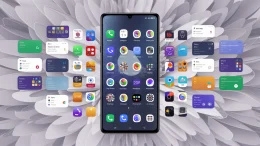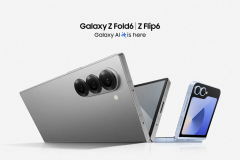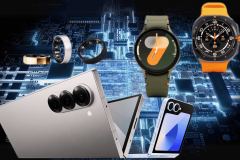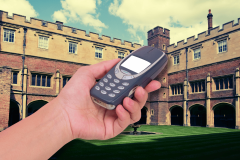Google is about ready to set its yearly agenda. Its I/O conference, which starts Wednesday, is Google’s main opportunity to showcase what it’s been working on across its sprawling techno-empire.
We don’t know if Google will continue to throw everything but the kitchen sink into its keynote address like it did in last year’s three-and-a-half hour extravaganza, but it seems safe to predict that there’s going to be one main star of the show: Android.
Sure, Google will probably have something to say about its Chrome OS, its nascent but burgeoning cloud-computing efforts and updates to its popular in-house apps such as Maps and Gmail. But most the attention is likely to fall on Google’s mobile-computing ecosystem, which is in the process of spreading from phones and tablets to wristwear, home devices and fitness.
Here’s what we’re expecting from Google I/O this year.
Android Wear To Dominate I/O
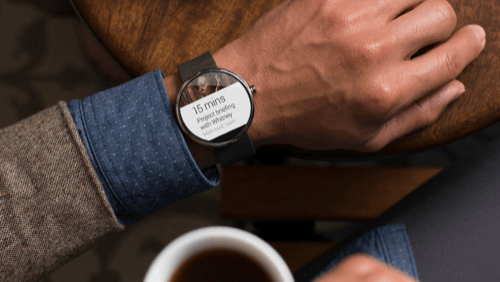
Google’s smartwatch future starts with Android Wear. Google has released a lot of information on Wear design and best practices, but there’s no Android Wear software developer kit yet. That’s on its way; its release should be one of the bigger announcements at Google I/O.
Google released a new video on the on Wear interaction and user flow. Google wants developers and designers to start thinking about how a smartwatch experience differs from that of a phone and build their apps around the new computing paradigm.
Google has taken a good approach with Android Wear, releasing a design emulator and giving developers all the basic information they will need to build Wear apps as soon as the SDK is released. Wear development won’t be incredibly difficult, either—certainly not compared to the only other smartwatch OS now on the market, Samsung’s Tizen OS, which runs on its Gear line of wearable computers.
Out of the box, just about every Android app in existence will work with Wear, which is designed to display and let users interact with the notifications Android apps already generate on phones and tablets. It’ll also be possible to develop apps specifically for Wear, but this fact gives Android a huge head start. Developers and designers will only need to make a few tweaks to support the voice-to-text functionality and how multiple notifications stack up in the user interface.
“Notice the same interaction on a wearable. Notice the reduced amount of overhead per interaction,” Google Developer advocate Timothy Jordan says in the video, comparing notifications on a smartphone to a smartwatch. “It is a fundamentally different user interaction model.”
At I/O, expect Google to really hammer that point home for developers, both in presentations and in the SDK. Look for official release dates and pricing of the first round of Android Wear smartwatches from LG and Motorola to come out of I/O as well. If past is prologue to any extent, Google might well lavish attendees with freebee Android Wear devices—so expect 6,000 people to be walking around San Francisco with new smartwatches by the middle of the week.
Android’s Good Ship Lollipop
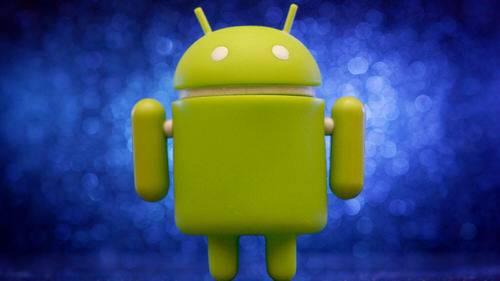
I haven’t yet confirmed if Android itself will be a central figure at Google I/O 2014, but it would be surprising if Google doesn’t offer a significant update—currently codenamed Lollipop—to its mobile operating system. Failing to do so would make two years in a row without one. (Google I/O 2013 didn’t feature any Android platform announcements, although the company did roll out the incremental Android 4.4 KitKat at a separate event later that year.)
So on that front, look for news in two areas: Android design and the way Android apps cooperate and communicate with one another.
See also: Google Launches Starter Kit For A More Consistent Web
Google has been gradually rolling out a new campaign for Web and Android design in the last couple of months. Last week, it announced a new guide for best practices in Web development that promotes tools for design across a variety of device types and sizes. Last year at I/O, Google announced Polymer, a design tool for Android, alongside the new Android Studio integrated developer environment that lets developers design and emulate how their apps will look on different screen sizes.
Rumors have filtered out in the last couple weeks about more design tools coming from Google. Android Police notes a new design tool template called Quantum Paper for more consistent Android design. Quantum Paper looks a lot like the principles presented in Google’s Web Starter Kit. Quantum Paper could turn up in the next version of Android, extending or replacing Android’s stock design, known as Holo Themes.
See also: Meet Android Intents, The System That (Sort Of) Recreates The Web With Apps
Under the hood, Google wants to improve communication and functionality between apps. Its most likely avenue in that regard would be to update its Android Intents system, which has allowed apps to share data and work together since Android’s inception. (Apple recently mimicked Intents with its iOS 8 “extensibility” announcement at its own recent developer conference.)
Google has also been focused on “deep linking,” or ways in which Web-based search engines—like, say, its own—can access and index information currently hoarded by mobile apps. The company took its first stab at providing deep linking capabilities in Android KitKat 4.4 in October 2013, and looks like a good candidate for an update in the next version of the operating system.
If Android gets an update, look for Google to replace the Dalvik runtime engine with its new Android Runtime engine as well.
Google’s biggest objective with Android, as with most Google properties, is to create new ways to collect information about users to make Google search (and hence Google advertising) more effective. In this realm, look for Android to take on more predictive capabilities through the Google Now app, implementing such rumored features as Google Nearby and Google Fit (also expected next week) into the Now experience.
Google will probably update the camera application programming interface at I/O this year as some sessions allude to teaching developers what is new with the Android camera. Google updated the camera software for Android during the KitKat 4.4 launch, but the camera API has been a work in progress ever since.
If Google does announce the new version of Android next week, look for it to come with a new Nexus device, perhaps a tablet, rumored to be the Nexus 8 and possibly built by HTC.
What we are not expecting from Google is the rumored Android Silver, a project that would kill the Nexus line of devices in favor of carrier-friendly devices that ship with stock Android and run on premium hardware. All rumors of Android Silver have pegged it as starting in 2015 and Google I/O is probably too soon for Google to nail down all the partnerships it will need to put the Android Silver project in motion.
Android Everywhere
At South By Southwest earlier this year, Google’s head of Android and Chrome, Sundar Pichai, said that he believes that Google is just “scratching the surface” of the wearable computing revolution. The most obvious place to start is the smartwatch (and Google Glass), but Google fundamentally understands that mobile-controlled computing is going everywhere, affecting every industry.
See also: Dropcam Lands In Google’s Nest
Google’s acquisition of Nest, the maker of “smart” connected thermostats and smoke detectors, is a good example of how mobile computing, centered on Android, will be able to control everything you do. Google wants to invade the home, your television, and your car. (Its acquisition of the smart-home camera maker Dropcam, which broke late on Friday, underscores the point.)
Android TV, a new television entertainment experience built on top of Android, may also debut at I/O, although how it will work with, or against, Google’s popular Chromecast streaming dongle isn’t yet clear. Android TV won’t just be a Chromecast replacement, though —it may have a significant focus on gaming as well, as Ars Technica reports.
As Android diversifies to wearable gadgets, the home, cars and television, you can start to see why Google’s focus on cross-device development and design makes sense.
Everything Else Google
At Google I/O 2013, the keynote touched on almost every aspect of what Google does, at some length—it was an extremely long presentation even before CEO Larry Page took the stage for a live question-and-answer session. Expect Google to hit on most of its developer services again this year.
Google Now is Google’s shift toward “anticipatory” information provided before you even know you want it, a radical departure from traditional user-driven search (open a browser window, search for something). Google Now performs this type of precognitive search by following what you are interested in on the Web, where you are and what you search for. Now is then delivered on Android and now Chrome through a card-based user interface.
Google Now is the future of Google search and it will infiltrate everything Google, taking its cues from all the Google platforms you use, from Nest in the home to Android TV, your Android smartphone and Wear smartwatch. Google may not announce a Now product update at I/O, but its presence will be everywhere at I/O.
One of the biggest questions for I/O this year is what is happening to its social network, Google+. For years, the head of Google+ Vic Gundotra was essentially the star of I/O, but he has mysteriously left the company and management of Google+ is now in other departments in Mountain View. The other interesting bit about Gundotra leaving Google is that I/O has long been his baby and he was the executive in charge of planning and execution. Even before Gundotra left, Pichai was the new executive at Google in charge of I/O. All this leaves us wondering if and when Google+ will get some attention.
Pichai has said several times that Google’s two platforms—Android and Chrome OS—will never merge. That doesn’t mean that Chrome OS won’t get some mobile friendly features though. Speculation on the Google beat is that Chrome OS will get touchscreen tablet capabilities, including a split-screen function and a touch keyboard.
Project Tango—a mobile 3D machine vision project—has been evolving at Google and a new tablet will be available later this year. Project Ara started as an advanced research project from Google to build modular do-it-yourself hardware like Lego kits for smartphones. If Google has made any progress with turning Ara into a hardware or software developer friendly project, it may get a little love in developer sessions at I/O.
Updates to the Google Play Developer Console were one of the features at I/O 2013 and it is likely that we will see some more features and rounding of rough edges to come this year. Android Studio, which has been in beta since last I/O, will likely see an update as well.
Google Maps, Google Cloud Platform and the Chrome browser and Chrome OS will all likely get some mentions from Google during the keynote.
Google loves its navel gazing projects like its upcoming robot invasion (led by Android founder Andy Rubin) and its self-driving cars. Last year, the Google I/O official after party sported robot everywhere, including serving attendees cocktails. If you are on the floor of Mosone West in San Francisco on Wednesday, you may even see one of Google’s self-driving cars.
ReadWrite will be on hand at Google I/O this Wednesday to report everything and tell you what it means. Follow mobile editor Dan Rowinski, senior writer Adriana Lee and editor-in-chief Owen Thomas as ReadWrite explores all things Google, Chrome and Android at Google I/O 2014.
Lead image courtesy of Google; Moto 360 image courtesy of Motorola
